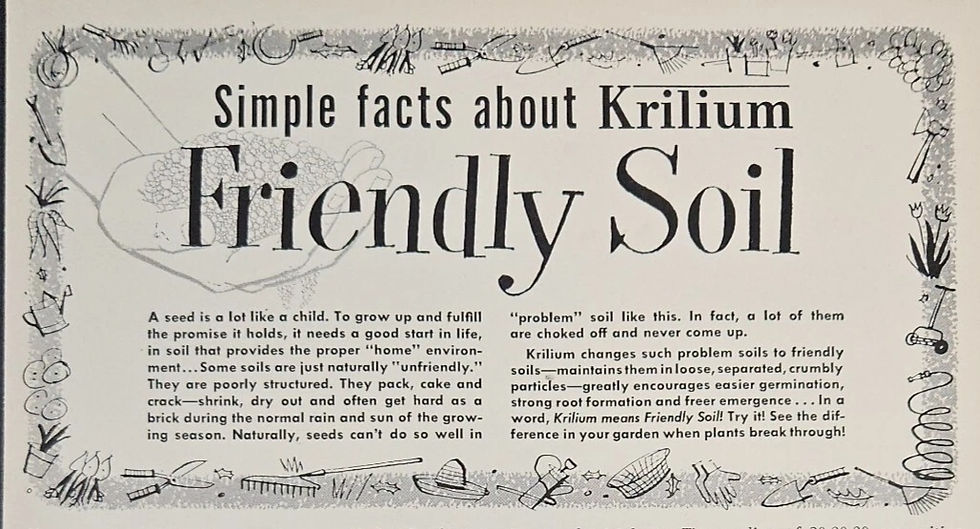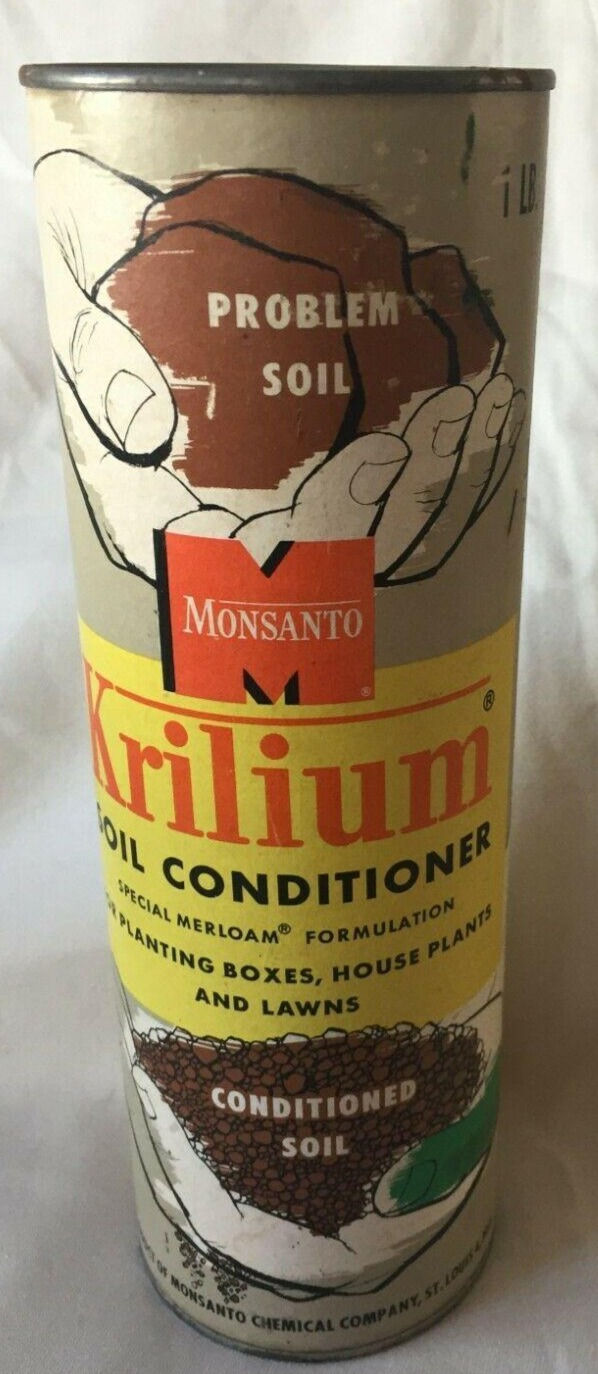Artificial Organic Matter? The Rise and Fall of Krilium
- Anneliese Abbott

- Aug 14
- 3 min read

Organic matter was really big in the early 1950s. Even the chemical fertilizer industry was championing it. That gave Charles Allen Thomas, a chemist at Monsanto Chemical Company, an idea. Since the fertilizer industry stressed that the main value of organic matter was in improving soil structure—not in feeding plants—could it be possible to develop a chemical that would have all the physical benefits of soil organic matter? In January of 1952, Monsanto started marketing Thomas’s creation—a sodium salt of a hydrolyzed polyacrylonitrile—as a synthetic substitute for organic matter. Their brand name was Krilium.
Krilium, Monsanto boasted in its advertisements, could restore soil structure just like organic matter. “Now there’s new hope for people with problem soil,” one Krilium ad proclaimed. “Simply by mixing in Krilium soil conditioner, it is changed to ‘friendly’ soil—soil that stays loose, crumbly and porous—that encourages seeds to sprout, roots to form and plants to come up easily through the soil, out into the sunshine.” “Krilium may prove the answer to many erosion problems,” Time magazine told its readers on January 7, 1952.

Organic farmers were horrified when they saw the Krilium ads. “Nature has just lost another battle to the conquering armies of science,” Organic Gardening warned in a February 1952 article. The magazine forecasted serious long-term damage to soil structure. What would Krilium do to the earthworms? What effect would it have on the nutritional value of crops? “No thinking person, not even the maker of Krilium, will consider that artificial product to be a logical substitute for humus,” the article concluded. “But, unless the irreplaceable value of organic matter is stressed continuously, a half-century’s work in conservation may be tossed overboard.”
Fortunately for soil health, Krilium was never widely adopted. The initial reason was the price. Monsanto initially marketed Krilium with a price tag of nearly two dollars per pound, and they recommended an application rate of 400 to 2000 pounds per acre. No farmer could afford to spend that kind of money on a dubious organic matter substitute, even if it really worked as well as Monsanto claimed. Real organic matter was much cheaper!
Krilium had other problems, too. An anonymous letter from a Monsanto employee printed in the July 1952 issue of Organic Gardening reported that one of the company’s tests involved sprinkling water on a plant-covered slope to see if it would stop erosion. “There was no erosion, but every plant, broadleaf and narrowleaf alike, was killed by the application,” the whistleblower warned. “Mixed with the soil there was no observed effect, but from the above report it is obviously toxic when applied to foliage.” At the Connecticut Agricultural Experiment Station, geraniums grown in Krilium-treated soil developed root rot. “Roots of those plants, in fact, were almost nonexistent,” Organic Gardening reported in September 1952.
“We note that the soil conditioner craze has finally hurled itself into a frenzied collapse,” Organic Gardening and Farming reported in August 1955. Three years after it started, the Krilium boom was over. Monsanto’s experiment was a failure—making fake organic matter was harder than Thomas had thought. Soil conditioners continued to be manufactured, but they were never widely adopted. After Krilium busted, the agricultural chemical industry shifted their strategy to claiming that organic matter wasn’t important. Since they couldn’t manufacture it and sell it at a profit, it must not be necessary, right?



Comments